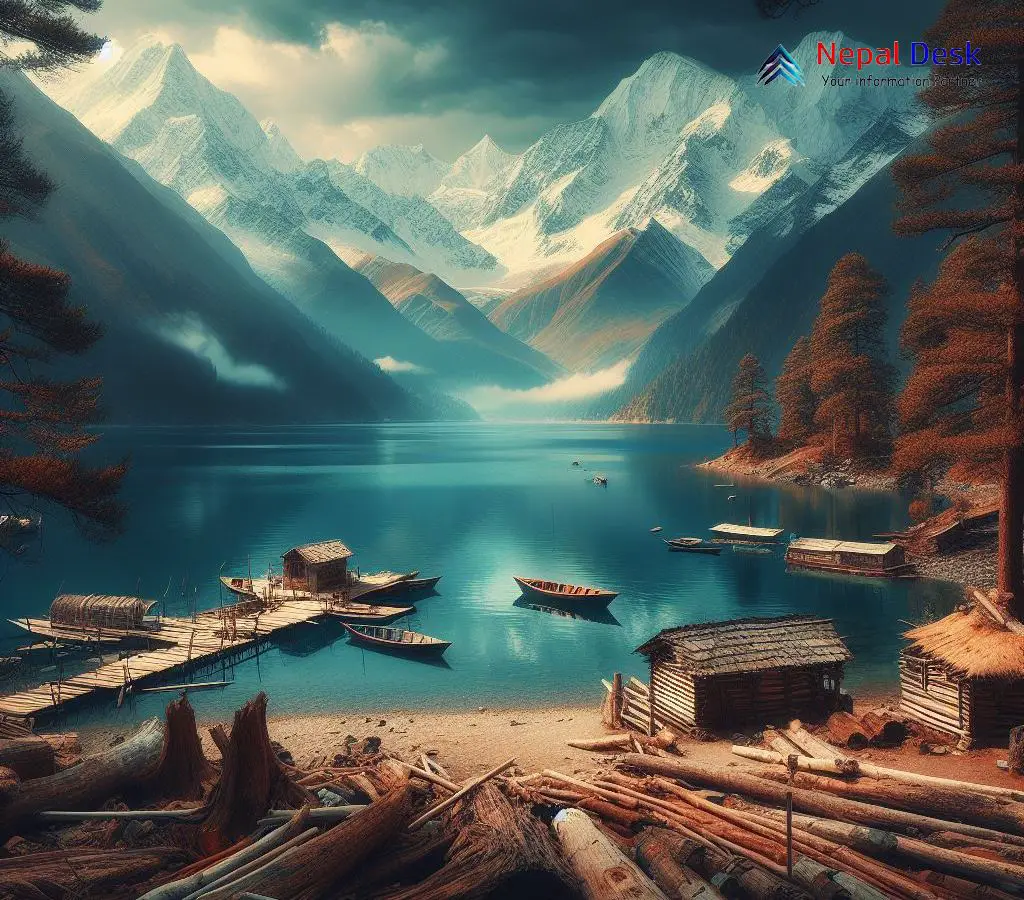Rara Lake Tourism : Over 6,200 Visitors in the Last Five Months
Published Date

Published Date
Rara Lake attracts a surge in tourism, welcoming 6,200 visitors in the past five months, signaling a positive rebound from the pandemic's impact.
⏱ 3 min read
Rara Lake has experienced a significant increase in visitors, with 6,200 tourists exploring the area within the last five months. Rara National Park reports that this figure consists of 6,075 domestic tourists, 26 from SAARC countries, and 99 international travelers. The timeframe extends from mid-July to mid-December.
Rara National Park Office Information Officer Jaihari Dhital confirmed that the number of tourists at Rara has indeed grown in recent months. An increased influx of domestic visitors was particularly noticeable during the Dashain-Tihar holidays. Within the five months, approximately Rs 1.8 million has been generated in revenue from tourism.
In comparison to the previous year, where tourist numbers suffered due to the pandemic, this year demonstrates a more positive trajectory. In total, last year only saw 11,000 domestic visitors, 26 from SAARC countries, and 183 international tourists.
Entrance fees for Rara National Park include Rs 100 per person for domestic tourists, Rs 1500 per person for those arriving from SAARC countries, and Rs 3000 per person for other foreign visitors. Typically, most (75%) experience Rara via air travel while the remaining 25% use road transportation.
However, industry professionals argue that there is potential for further growth in visitor numbers if reliable roads and air routes are established. Additionally, an inadequate number of suitable accommodations poses challenges for tourists visiting the Rara area.
Some visitors are adversely affected by the current state of unreliable infrastructure and limited lodging options. Nevertheless, there has been a notable increase in tourist activity during the colder season. Ongoing construction work on the Karnali highway continues to cause inconvenience for some travelers.
Surprisingly, Rara is witnessing a continuous flow of tourists seeking leisure and recreation even amid frigid temperatures and snowfall in recent times.
Opportunities for Local Community Development
The growth in tourist numbers at Rara Lake presents a valuable avenue for socioeconomic progress within surrounding villages. Local communities can be encouraged to invest in tourism infrastructure such as homestays, campsites, craft shops, guiding services, horse rentals, and many more. Creating robust linkages between national park revenues and community benefits can foster conservation stewardship and sustainable livelihoods.
Promoting Offbeat Travel in Far West Nepal
Rara shines as an exemplary offbeat destination in the relatively under-visited Karnali province for adventurous domestic and international travelers. Along with lake visits, tourism campaigns can showcase Rara's cultural diversity through settlements of Chhetri, Brahmin, Thakuri, and marginalized groups offering rare glimpses into traditional lifestyles. Birdwatching within the park, treks to villages practicing shamanism, and scenic landscape photography also provide niche offerings.
Preserving the Integrity of the Lake Ecosystem
With rising footfalls, maintaining Rara Lake's pristine ecology is imperative through strict guidelines on waste management, permissible activities, and monitoring for overcrowding pressures. As the smallest national park in Nepal, Rara's delicate natural balance faces substantial ecotourism challenges moving ahead. Visitors must practice responsible travel while administrative capacities require enhancement to sufficiently oversee conservation aims.
Enabling Year-round Tourism
The recent off-season tourist activity at Rara reveals the potential to counter seasonality patterns and unreliable weather constraints through appropriate policies. Winter packages catering to snow leopard sightings, frozen lake strolls, and cultural experiences across Rara's settlements can attract travelers during colder months. Reliable transportation and heating facilities in hotels and homestays are crucial to cementing year-round appeal.
